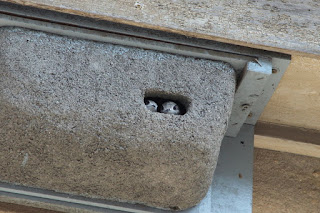A day out in London exploring nature
London is a massive and bustling city in the UK, but surprisingly, despite all its shops and streets, and traffic and buildings, it is a good place for exploring nature if you know where to go. As a matter of fact, as much as 47% of London is actually green space, though this may not be evident if you are just looking at all its building developments, housing and roads.
If you are a naturalist with a special interest in a particular area of study, you can come to London and spend an interesting time there seeing what you can find. For example, a botanist can see how many wildflowers they can find growing in the urban environment, and see what trees they can discover in the city’s streets, parks and gardens. If you are a bird-spotter, you can be on the lookout for different species, and it is possible to get some surprises.
The very rare bittern is a species that has been seen in wetlands just a few km from the city centre. The American robin made national news and excited twitchers when it was seen in London in the Peckham Rye station area back in 2006.
Regent’s Park
It is the parks that are the obvious place to look for nature and the city of London has a wonderful selection of parklands, which are home to all sorts of incredible wildlife. Regent’s Park not only supports an interesting flora and fauna in the wild, including frogs, toads, common newts, herons, cormorants, bats, hedgehogs, foxes, and as many as 21 species of British butterfly, but is also home to London Zoo, which is worth a visit to see many exotic species.
Where to stay on a Day Trip to London
Perhaps you have already heard about what a great place the big city can be for connecting with nature, and have decided to make a day trip to London? Perhaps you are planning to take a look at some of its parks but fancy somewhere to be able to rest between morning and afternoon explorations. There are plenty of hotels by the hour on DayBreakHotels site, where you can book a room for your use just for the day. Having such a hotel room can be convenient as a place to leave any baggage you brought with you and also for any shopping you may have done while in London. Even though your day trip is to discover nature and urban wildlife you may well be tempted by the incredible range of shops on offer in London. Convenience is important for you to get the most out of your day in the big city and Hyde Park is in convenient distance to Regent's Park.
Hyde Park
Hyde Park is a popular park in the heart of London that is a great place for spotting wildlife, and on a day trip to the city perhaps you could visit this park in the second half of your day. Hyde Park has plenty of wildflowers in its meadow and the these plants attract lots of butterflies and pollinators in summer. The Serpentine Lake attracts many waterbirds including great crested grebes. The park has a great variety of birds, including long-tailed tits, dunnocks and robins, and buzzards have been sighted here too.
Go Wild In the City
There are also organisations in London that provide services that help introduce residents and visitors. Wildinthecity is one such non-profit organisation that provides guided walks in the green spaces and natural areas of the London area, and includes foraging, bushcraft and camping in the wild as skills you can learn. Wildinthecity shows people how to connect with nature and teaches about the pleasures to be gained outdoors, as well as how to identify edible fruits and plants, for example.
London may be a busy metropolis but is still a wonderful place for discovering the natural world.




















